CMX may not have had the biggest titles or the biggest sales, but its catalog had a pleasing eclecticism: who else would license series as utterly different as Moon Child, Madara, and Go West? I didn’t always love what they published, but I appreciated their efforts to bring important artists and off-beat series to American audiences’ attention. I also appreciated the care and consistency with which they edited books; it’s a sad irony that many fans will remember them for the Tenjo Tenghe fiasco and not for the fine job they did with Emma and Shirley. Below are the ten CMX titles I plan to keep in my permanent collection. (Click here for a kid-friendly list of CMX manga.)
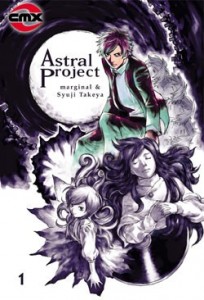 10. Astral Project
10. Astral Project
By Marginal and Suyuji Takeda • 4 volumes (complete)
Astral Project might have been an indigestible stew of pseudo-science and Deep Thoughts About Jazz, as it focuses on a young man discovers a connection between his sister’s disappearance and an Albert Ayler recording that helps facilitate out-of-body experiences. Marginal spins a ripping yarn, however, grounding the story’s more fantastic elements in the gritty realism of Tokyo’s red light district. He immerses us in the story to such a degree, in fact, that we learn things as Masahiko does; we’re never one step ahead of our protagonist, a common problem in thrillers. Syuji Takeya’s artwork won’t appeal to everyone, as it sometimes has a rough, sketchy quality that doesn’t mesh well with the dark, Photoshopped backgrounds, but Takeya creates a memorable assortment of faces and bodies that suggest the seediness of Masahiko’s world more readily than dialog could. Quite possibly Ornette Coleman’s favorite manga. (Originally reviewed at PopCultureShock on 10/27/08. )
 9. Chikyu Misaki
9. Chikyu Misaki
By Yuji Iwahara • 3 volumes (complete)
This fast-paced adventure plays like best live-action film Disney never made, mixing comedy, family drama, and fantasy elements to tell the story of fourteen-year-old Misaki, who discovers that the local lake is inhabited by a pint-sized Loch Ness Monster. The twist? Little Neo transforms into a cute little boy on land — a nifty trick when a band of kidnappers-cum-poachers get wind of his existence. Chikyu Misaki has a kind of fierce kid logic to it: who but a ten-year-old would dream up a story in which a dinosaur, a downed airplane, a lost suitcase filled with gold, and a potential stepmother all get a turn in the spotlight? Yuji Iwahara’s artwork is also a big plus: his character designs do a fine job of delineating each cast member’s personality and role in the drama, while his action scenes are crisp and fluid. Only a few odd, squicky moments of sexual humor prevent this from being a slam-dunk recommendation for the under-twelve crowd.
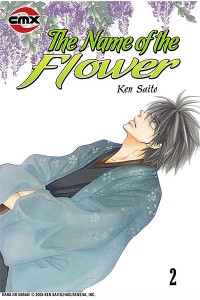 8. The Name of the Flower
8. The Name of the Flower
By Ken Seito • 4 volumes (complete)
Did Ken Saito have Charlotte Brontë on the brain when she dreamed up the plot for The Name of the Flower? I ask because Flower‘s storyline seems like pure Masterpiece Theater fodder: Chouko, a young orphan left mute and despondent by her parents’ death, is sent to live with a male guardian who endured a similarly tragic past. Over time, the two form a deep attachment that neither dares admit, an attachment tested by Chouko’s decision to enroll in college and Kei’s general reclusiveness. If the set-up is ripe for melodrama, Saito manages to craft a story that’s rooted in everyday experience; her characters’ journey to self-awareness and romance is complicated by real-life obstacles, not mad wives in the attic. Lovely art cements the bittersweet mood of this borderline josei title. One of my nominees for Best New Manga of 2009.
 7. Shirley
7. Shirley
By Kaoru Mori • 1 volume (complete)
At first glance, Shirley looks like a practice run for Emma, a collection of pleasant, straightforward maid stories featuring prototype versions of Emma‘s main characters. A closer examination, however, reveals that Shirley is, in fact, a series of detailed character sketches exploring the relationships between three maids and their respective employers. While some of these sketches aren’t entirely successful — Kaoru Mori cheerfully describes one as “an extremely cheap story about a boy and an animal” and attributes the inspiration for another to The A-Team — the five chapters focusing on thirteen-year-old Shirley Madison and her independent, headstrong employer are as good as any passage in Emma. (Reviewed at The Manga Critic on 3/9/10.)
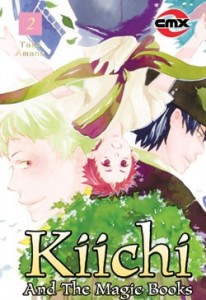 6. Kiichi and the Magic Books
6. Kiichi and the Magic Books
By Taka Amano • 5 volumes (complete)
This poignant coming-of-age story focuses on Kiichi, a young oni whose lonely existence is transformed by a chance encounter with a traveling librarian. Inspired by the information in one of Mototaro’s books, Kiichi decides to leave his village in search of others like himself. Kiichi’s journey brings him into contact with a variety of people, many of whom seek to harm him or profit from his unique abilities, or who simply fear his appearance. Though Taka Amano never shies away from the darker implications of her story, showing us just how unscrupulous, ignorant, and venal people of all ages can be, Kiichi and the Magic Books is never mawkish or didactic; the fantasy elements add considerable interest and charm, while Kiichi proves emotionally resilient in the face of prejudice and mistrust. Readers more accustomed to the look and feel of Naruto may not initially respond to Amano’s starkly beautiful pen-and-ink drawings. Encourage them to try Kiichi anyway, as this series offers the same degree of complexity, imagination, and emotional authenticity as an Ursula LeGuin or Phillip Pullman novel. CMX’s best title for readers under the age of twelve. (Originally reviewed at Good Comics for Kids on 1/23/09.)
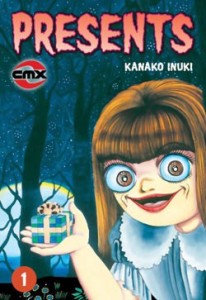 5. Presents
5. Presents
By Kanako Inuki • 3 volumes (complete)
Any series that prompted John Jakala to coin a phrase as useful and catchy as “comeuppance theater” deserves a place on a top ten list of some kind; the fact that Kanako Inuki’s horror-comedy is fiendishly entertaining earns it a spot on this particular countdown. Presents reads a lot like Tales of the Crypt, with each story adhering to the same formula: creepy child-woman Karumi offers an enticing present to an unsuspecting person, a present that quickly reveals itself to be an instrument of punishment for the recipient’s bad behavior or poor character. (Hence Jakala’s term “comeuppance theater.”) Though she loves drawing bugs and hideously deformed faces, Inuki is less interested in scaring us than making us laugh and squirm with recognition at our own folly; Inuki’s creepiest stories are also her funniest, satirizing commercial culture and female vanity with aplomb. A must for fans of Kazuo Umezu and Hideshi Hino.
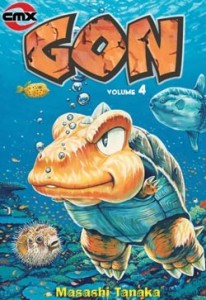 4. Gon
4. Gon
By Masashi Tanaka • 7 volumes (complete)
Billed as “the pint-sized terror from the Jurassic era,” Gon is a small orange dinosaur who runs amok in present-day forests, oceans, and arctic tundras, terrorizing predators, defending small animals, and doing whatever else suits his mood. Masashi Tanaka’s artwork is old school in the best sense, employing cross-hatching and delicate lines in lieu of screentone to create volume and depth. His panels are astonishingly detailed yet never fussy or poorly composed — if anything, Tanaka’s technique yields sharper images than the contemporary practice of mixing computer-generated fill with hand-drawn lines. Though Tanaka endows his creatures with unusually expressive faces, he resists the urge to fully anthropomorphize them; their behavior seems species-appropriate even if their expressions occasional verge on human. (Read: the elephants don’t wear spats or drive automobiles, the dogs don’t pretend to be World War I flying aces.) His restraint inoculates Gon against a terminal case of the cutes, resulting in a sometimes funny, sometimes violent, sometimes heartbreaking look at the natural world. (Originally reviewed at PopCultureShock on 2/20/08.)
 3. From Eroica with Love
3. From Eroica with Love
By Yasuko Aoike • 15 volumes (incomplete)
What begins as an unsatisfying story about a trio of telepathic teens quickly takes a turn for the awesome with the introduction of Dorian Red, an openly gay British earl who dresses like a rock star and crisscrosses the globe to steal priceless works of art. Eroica eventually settles into an entertaining cat-and-mouse game between Dorian and uptight NATO intelligence officer Klaus Heinz von dem Eberbach, a stoic homophobe who detests the winking, flirtatious Dorian. Though they travel separately, their paths frequently converge in hilarious and explosive ways: hijackings, kidnappings, car chases. The frosting on the cake is Yasuko Aoike’s vintage seventies character designs: Dorian is the spitting image of Robert Plant, right down to the ridiculously tight pants and flowing scarves, while Klaus wears a ‘do as severe and straight as he is. The result is a delirious, over-the-top action-adventure that brings rock-n-roll swagger to a James Bond premise.
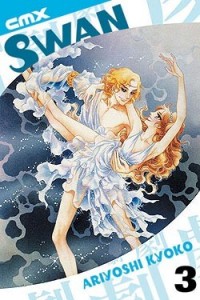 2. Swan
2. Swan
By Kyoko Ariyoshi • 15 volumes (incomplete)
Swan captures a particular moment in ballet history when the best Russian troupes commanded large, enthusiastic audiences on both sides of the Iron Curtain; when every developed nation had a ballet company of its own (even if the form was imported from elsewhere); and when dancers like Nuryev and Fonteyn were bonafide international celebrities. Into this glamorous world comes sixteen-year-old Masumi, a Japanese girl from the sticks who has passion and raw talent, but lacks refinement. She wins a spot at a national academy for dance, and begins clawing her way up the ranks, learning the repertoire (cue the Tchaikovsky!), making friends and enemies, and eventually finding her way to New York for immersion in new styles and techniques. As compelling as the drama may be, the real star of Swan is the art: the dance choreography is beautifully rendered, capturing both the heroine’s graceful intensity and the music’s lyricism. A few aspects of Swan haven’t aged well — the heroine falls victim to bouts of hysterical deafness, for example — but the strong visuals, historically accurate details, and sports manga vibe keep this marvelous series buoyant throughout.
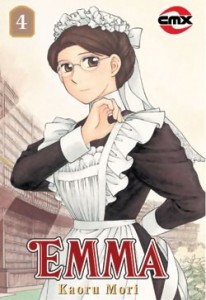 1. Emma
1. Emma
By Kaoru Mori • 10 volume (complete)
If Emma‘s rich-boy-loves-poor-maid storyline suggests a lost volume of The Forsyte Saga, the expert way in which William and Emma’s courtship is told more than compensates for a few moments of narrative cliche. Kaoru Mori immerses us in the very different worlds of her lead characters, from the elaborate dinner parties and country outings of William’s circle to the scut work and boozy revelry of Emma’s fellow servants. Mori occasionally fumbles small details (pssst… Tosca didn’t debut until 1900!), but most of the time she convincingly recreates the period through her exquisite pen-and-ink drawings of intricate costumes, ornate furnishings, and fussy architecture. That keen sense of observation extends to her cast as well: Emma bursts at the seams with memorable supporting players, from Kelly Stowner, William’s crusty but kind-hearted former governess, to Hakim Atawari, an Eton-educated raj and friend of the Jones family. The main story concludes with volume seven; volumes eight, nine, and ten feature stories about some of the secondary characters, as well as a resolution for Emma and William’s long and tortured romance. (Originally reviewed at PopCultureShock on 9/19/07.)
* * * * *
Here’s a friendly challenge to everyone who’s still mourning the loss of a favorite CMX title: if I didn’t include your favorite on this list, add your suggestion(s) to the comments thread. I’ll compile everyone’s recommendations into a poll and let you choose one for me to review next month.
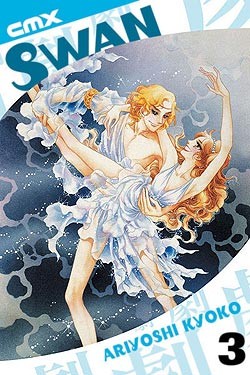
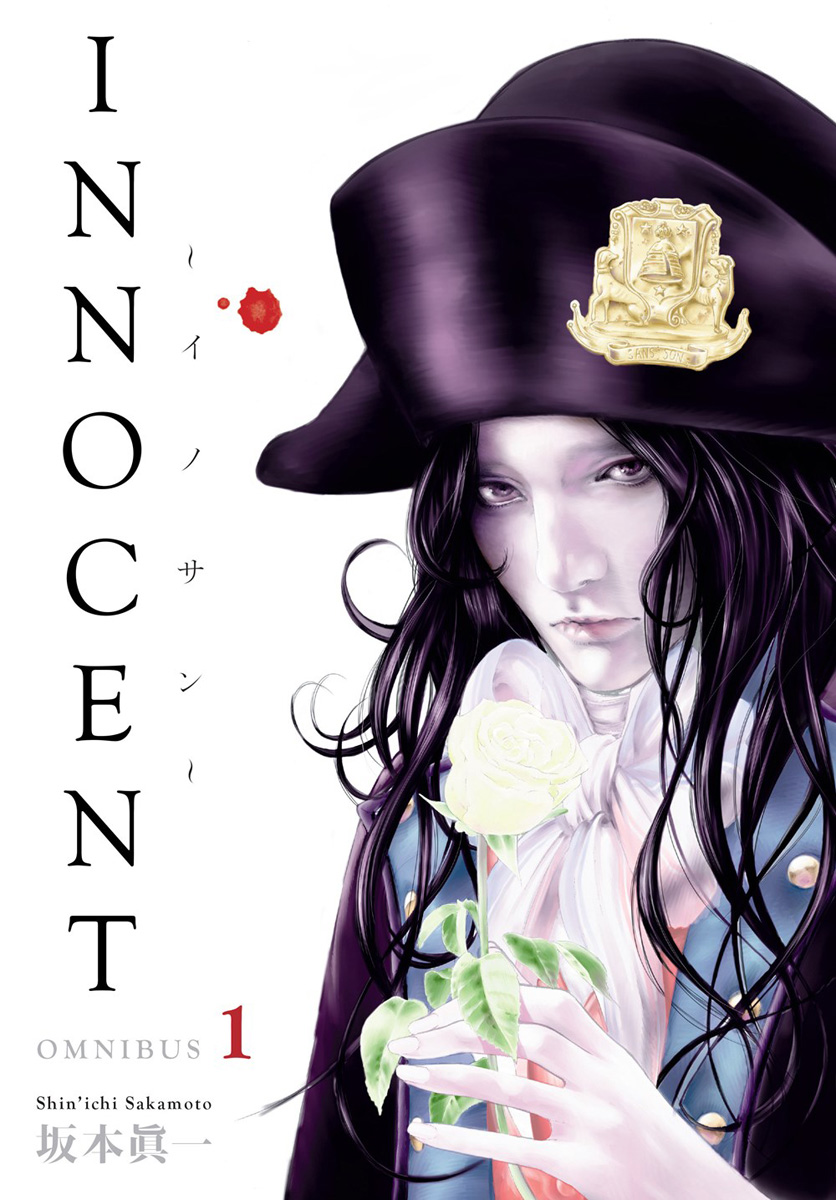
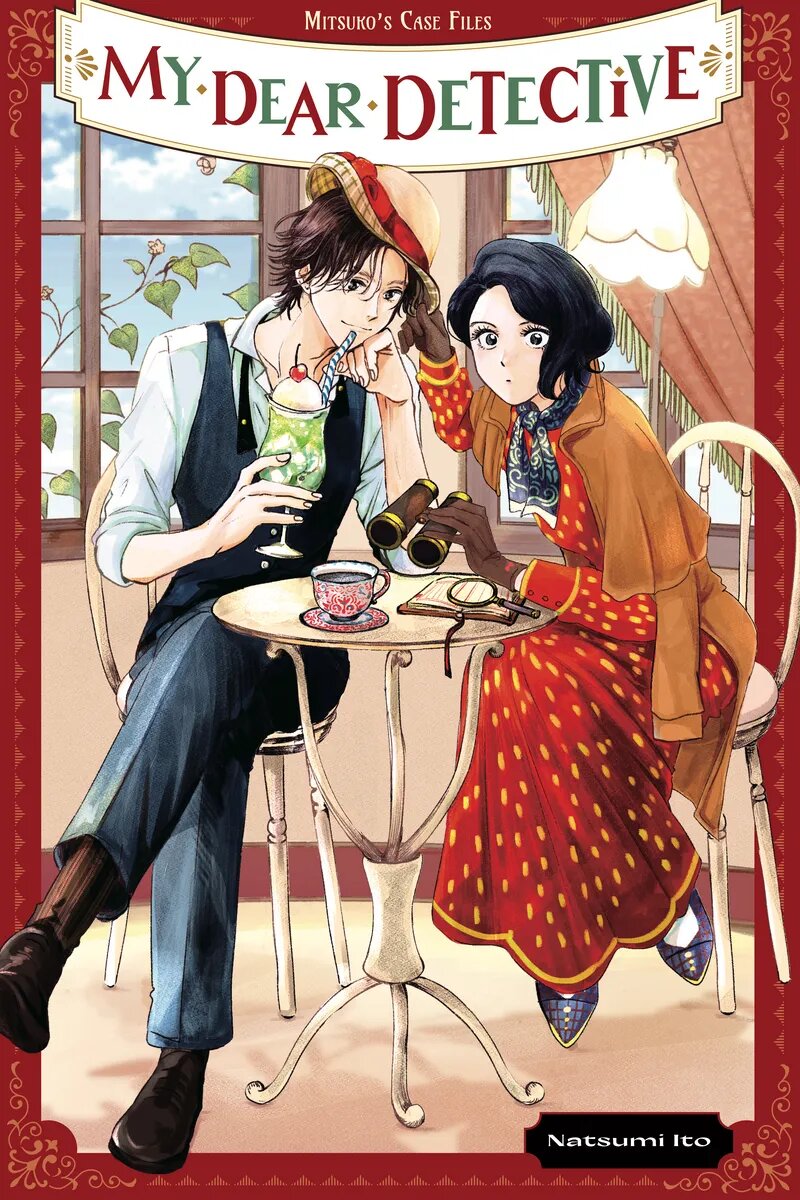

Alex Hoffman says:
I have hope that of those series on this list that are as-of-yet incomplete will find a home – Gon was rescued from Paradox Press, you know.
Katherine Dacey says:
I know! I used to own one of the Paradox editions (Gon Fishing, I think it was). Blasphemous as it is to say, I kind of liked the older version better than the re-issue. Gon never seemed like one of those series where ordering the stories according to their publication history was really important to enjoying or understanding it. I also liked the Paradox edition’s thinner volumes and bigger trim sizes. But I shouldn’t complain, as CMX did give us the full run of an awesome series.
I’d love to see another company finish Swan or Eroica, but I’m not holding out too much hope; classic shojo has not performed well in the US, and I can’t see anyone taking on the financial burden unless Fantagraphics’ Moto Hagio experiment goes well.
Daniella Orihuela-Gruber says:
I don’t know if you read it or even liked it, but I feel like you missed Apothecarius Argentum. It was a very cute fantasy/romance/almost medical drama.
Katherine Dacey says:
Hi, Daniella! I read the first volume of Apothecarius Argentum and though I loved the ideas behind the story, the story itself didn’t make a big an impression on me. That was a while ago, however, and a lot of people have suggested that I give it a second chance. Your comments are making me curious to see if my local library has copies.
Thanks for the suggestion!
Serdar says:
EMMA and GON both deserve to get relicensed ASAP. The latter is a perfect kid’s title, and EMMA is one of the few manga I’ve seen in the general circulation (that is, not the juvenile’s collection) of my local library. It deserves it.
Jade says:
I’ll second the Apothecarius Argentum reccomendation. I was about to give up shojo titles completely as vapid doormat handbooks, but then this showed me they could be a lot more than couture and sexual predators. Now that I think about it, CMX was the only place where I could be confident that a shojo title wouldn’t make my skin crawl in the first or second volume.
Dorothea is pretty good too, though a bit dry.
Katherine Dacey says:
@Serdar: I never understood why Gon earned a teen rating here in the US; sadly, I think our hysteria about protecting kids from “harmful” images meant that a lot of younger readers never saw this series. And what a shame! Gon is exactly the kind of comic I would have loved when I was six or eight.
@Jade: Thanks for the suggestions! I’ve been curious about Dorothea (the covers looked snazzy), but almost no one reviewed it, so I had no idea whether it was worth a look.
Sadie says:
I’m a little confused where all the Gon love comes from but other than that a good list!
CJ says:
Gon is fun, but only from time to time for me. I’m quite mad my library is under unnecessary reconstruction right now or I’d be over there renting stuff like crazy again.
I only have 3 CMX titles right now, but I’m adjusting my Otakon wish list. I have Gon (except for volume 7), which someone like Viz could shove out as a huge omnibus in about five minutes because you only need to translate chapter titles, I think it has pretty good relicense potential if only because the Viz Kids line seems to sell and they’ve already got two other titles about dinosaurs. I’ve got Land of the Blindfolded, which is one of the few high school romance series I’ve ever enjoyed and I think it’s because it finally made logical sense why most of the kids were hanging out with each other for reasons other than “he/she is attractive and/or popular”, that usually annoys me. And I’ve got Moon Child, which is really freakin’ weird, I think it was a bit too melodramatic for me. I’m still working on my Otakon wish list, but fast approaching OOP titles are sure to get a bump so long as they don’t have an anime out for them that I can still get easily for years to come (sorry, Emma!)
When does the Fantagraphics Moto Hagio thing come out? I need to make sure to buy a copy!
Katherine Dacey says:
@Sadie: What’s wrong with a small orange dinosaur who behaves like Dennis the Menace? 😉
@CJ: Land of the Blindfolded is one of the very few CMX titles I haven’t read (or tried to read). I haven’t heard as much about Blindfolded as some of the other shojo titles in the CMX catalog, but I see that Booklist gave it a good review. I’ll have to hunt down the first volume and see how it goes. As for Moon Child, I thought it had a lot of potential, but was disappointed by the way the manga-ka romanticized the relationship between Jimmy and … was it Shona? I can’t remember the character’s name, but he was really abusive towards Jimmy. Anyway, I liked the art and some of the ideas behind Moon Child, but I thought it was kind of a mess.
BTW, A Drunken Dream and Other Stories will be released on September 8, 2010. Here’s the Amazon link.
Kris says:
I usually hang out on the niche side of mangadom so two titles I really enjoyed are by artists that are more known for their BL work. Those titles are Tenryu-The Dragon Cycle by Sanami Matoh and Seimaden by You Higuri (which does feature some BL content.)
Katherine Dacey says:
Hi, Kris! I’ve been curious about Seimaden, as I’ve enjoyed some of You Higuri’s other work (most notably Cantarella), but haven’t read it. I did try reading Tenryu and only made it through one volume; I’m kind of an impatient reader, and if a series doesn’t hook me right away, my tendency is to bail. Sounds like it might be worth a second look — thanks!
Michelle Smith says:
I’m quite partial to the series of Nari Kusakawa. Unfortunately, Two Flowers for the Dragon will not be finished, but Palette of 12 Secret Colors is seriously cute.
Katherine Dacey says:
I really like her stuff, too, Michelle — so much, in fact, that I’ve reviewed The Palette of 12 Secret Colors at Good Comics for Kids. I think I actually reviewed the first volume of Two Flowers for the Dragon when I was still a contributor at PCS, but I didn’t keep up with the series, so I will add it to the poll.
Have you read The Recipe for Gertrude? I’ve been curious about that series, as it has such a weird premise, even by manga standards.
Michelle Smith says:
Not yet, though it’s on my shelf!
Laura says:
I don’t know if you’re interested Kate, but I did review The Recipe for Gertrude. I’d recommend it as a fun read. I’m not too keen on Kusakawa’s art style, though.
Katherine Dacey says:
Thanks, Laura — I will check it out! I’ve liked Kusakawa’s other series, and wished CMX had done a better job of promoting them to tweens, who seem like the right audience, content- and art-wise.